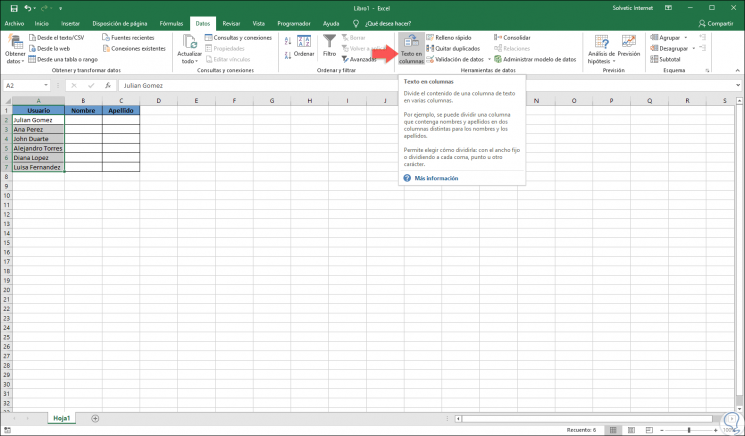
- #How to assign column headers in excel 2016 how to
- #How to assign column headers in excel 2016 update
- #How to assign column headers in excel 2016 full
- #How to assign column headers in excel 2016 code
- #How to assign column headers in excel 2016 plus
Sub SelectCellInHeader()ĪctiveSheet.ListObjects("myTable").HeaderRowRange(5).SelectĮnd Sub Select a specific column within the totals section
#How to assign column headers in excel 2016 how to
This macro shows how to select the column header cell of the 5th column. Sub SelectColumnData()ĪctiveSheet.ListObjects("myTable").ListColumns(4).DataBodyRange.SelectĪctiveSheet.ListObjects("myTable").ListColumns("Category").DataBodyRange.Select This is similar to the macro above, but it uses the DataBodyRange to only select the data it excludes the headers and totals.

Sub SelectAnEntireColumn()ĪctiveSheet.ListObjects("myTable").ListColumns(2).Range.SelectĪctiveSheet.ListObjects("myTable").ListColumns("Category").Range.Select The macro below shows how to select a column by its position, or by its name. MsgBox ActiveSheet.ListObjects("myTable").DataBodyRange(2, 4).value The following macro retrieves the table value from row 2, column 4, and displays it in a message box. Sub SelectTableData()ĪctiveSheet.ListObjects("myTable").DataBodyRange.SelectĮnd Sub Get a value from an individual cell within a table The DataBodyRange excludes the header and totals sections of the table. Sub SelectTable()ĪctiveSheet.ListObjects("myTable").Range.Select The following macro will select the whole table, including the totals and header rows. In reality, you would rarely use the select method. Many of the examples in this first section use the select method, this is to illustrate how to reference parts of the table.
#How to assign column headers in excel 2016 code
Master this, and your ability to write your own VBA code will be much higher. Understanding Excel’s document object model is the key to reading and writing VBA code.
#How to assign column headers in excel 2016 full
While you may be tempted to skip this section, I recommend you read it in full and work through the examples. The VBA code in this post details how to manage all these table objects. The individual columns are known as list columns. The totals row range, if displayed, includes calculations at the bottom of the table. The header row range is the top row of the table containing the column headers. The data body range only includes the rows of data, it excludes the header and totals. The range is the whole area of the table.
#How to assign column headers in excel 2016 plus
Then you’ll be able to work along with examples and see the solution in action, plus the file will be useful for future reference.ĭownload the file: 0009 VBA tables and ListObjects.zip Structure of a tableīefore we get deep into any VBA code, it’s useful to understand how tables are structured. I recommend you download the example file for this post. So, while we use the term ‘tables’ in Excel, they are still referred to as ListObjects within VBA. From a VBA perspective, the document object model (DOM) did not change with the upgraded functionality. This was a replacement for the Lists functionality found in Excel 2003. Tables, as we know them today, first appeared in Excel 2007. Whether you love tables as much as I do or not, this post will help you automate them with VBA. However, the biggest benefit to the everyday Excel user is much simpler if we add new data to the bottom of a table, any formulas referencing the table will automatically expand to include the new data. Therefore, it is clearly Microsoft’s intention that we use tables. For example, Power Query, Power Pivot, and SharePoint lists all use tables as either a source or an output. The basic structural rules, such as (a) headings must be unique (b) only one header row allowed, make tables compatible with more complex tools.

Controlling them using VBA provides a way to automate that power, which generates a double benefit 🙂Įxcel likes to store data within tables.

When I try to do this I just get "0", not McDonalds.Tables are one of the most powerful features of Excel. Excel table headers seem to work a bit differently. The question seems a bit silly because from any other normal cell it is just to write "=A1" to get the context from that cell. cell A1 and all tables should be updated with this column header instead.Ĭolumn headers: Sub-questions, McDonalds (name linked from cell A1), PizzaHut (name linked from cell A2) So if I want to compare with KFC instead I just want to enter KFC in eg. Both Table 1 and Table 2 have the headers McDonalds and PizzaHut and these names are linked to cell A1 and A2 respectively.
#How to assign column headers in excel 2016 update
As I will use the sheet for comparisons I would like to be able to change the column headers in a smart way instead of having to update all manually. I have a sheet with several smaller tables for different categories. I am working with Excel Tables in Excel 2013. This is my first post so I hope I can give a clear description of the problem.


 0 kommentar(er)
0 kommentar(er)
